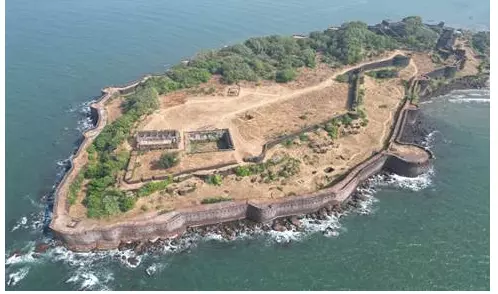Maratha Military Landscape nominated for UNESCO World Heritage list
The twelve component parts of this nomination are Salher fort, Shivneri fort, Lohgad, Khanderi fort, Raigad, Rajgad, Pratapgad, Suvarnadurg, Panhala Fort, Vijaydurg, Sindhudurg in Maharashtra and Gingee Fort in Tamil Nadu

Mumbai: India will nominate the ‘Maratha Military Landscape’ for inclusion in the UNESCO World Heritage List for the 2024-25 cycle, with a total of 12 components. The landscapes represent the extraordinary fortification and military system envisioned by the Maratha rulers.
The twelve component parts of this nomination are Salher fort, Shivneri fort, Lohgad, Khanderi fort, Raigad, Rajgad, Pratapgad, Suvarnadurg, Panhala Fort, Vijaydurg, Sindhudurg in Maharashtra and Gingee Fort in Tamil Nadu.
Of these Salher fort, Shivneri fort, Lohgad, Raigad, Rajgad and Gingee fort are hill forts, Pratapgad is hill-forest fort, Panhala is hill-plateau fort, Vijaydurg is coastal fort, whereas Khanderi fort, Suvarnadurg and Sindhudurg are island forts.
The nomination of the ‘Maratha Military Landscapes’ falls under the category of cultural property. These landscapes were included in the Tentative List of UNESCO World Heritage Sites in 2021. India’s nomination aims to preserve and bring global recognition to these historical sites, said a statement issued by the Union Culture Ministry.
It said that the ‘Maratha Military Landscapes of India,’ which developed between 17th and 19th centuries, “represent an extraordinary fortification and military system envisioned by the Maratha rulers.”
“This extraordinary network of forts, varying in hierarchies, scales and typological features, is a result of integrating the landscape, terrain and physiographic characteristics distinctive to the Sahyadri mountain ranges, the Konkan Coast, Deccan Plateau and the Eastern Ghats in the Indian Peninsula,” the statement further said.
There are more than 390 forts in Maharashtra, out of which 12 forts are selected under the ‘Maratha Military Landscapes of India,’ and eight of these forts are protected by the Archaeological Survey of India (ASI).
Distributed across diverse geographical regions like the Sahyadri mountain ranges, the Konkan Coast, Deccan Plateau, and the Eastern Ghats, these forts exhibit a unique integration of landscape, terrain and physiographic characteristics. Each fort differs in hierarchy, scale, and typology, reflecting the Marathas’ innovative approach to military architecture.

